|
You are receiving this email because you signed up for the monthly ASI Newsletter.
If you no longer wish to receive these emails you can unsubscribe here
|
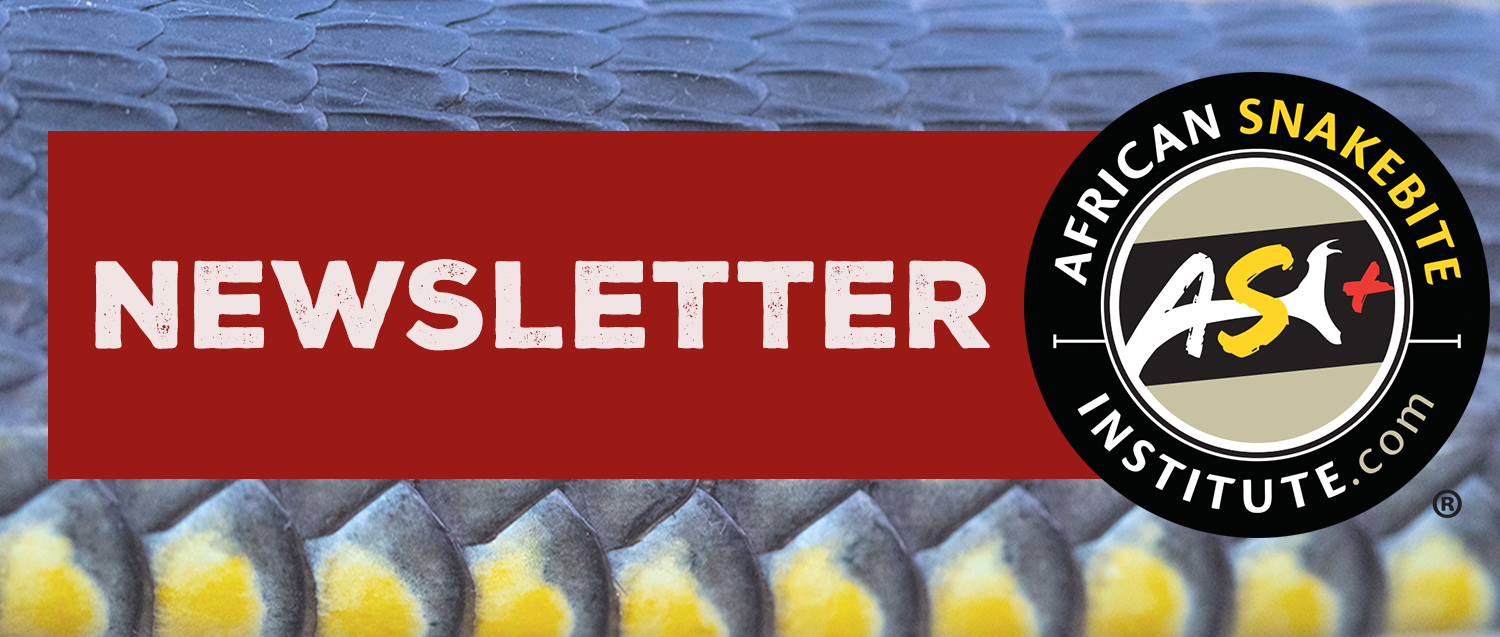 |
|
October 2024 - Snake senses
|
|
|
|
It’s hard to imagine how snakes perceive the world as they slither on the ground, underground, or move through the trees and shrubs. Snakes have extraordinary senses, including perceiving the world in ways that humans cannot. Some of the senses are well studied, while others have been neglected compared to what is known for other animals. The brain of the snake receives a large variety of information from its immediate environment. This information, and how the snake responds to it, is vital to its survival and the success of the species.
Vision: How and what snakes see.
In general, snakes have good vision, but it is better developed in tree-living snakes than in the terrestrial or burrowing species. Fundamentally, the eyes of snakes are very similar to that of humans. They are cup-shaped and the eyeball is spherical. Snakes either have round, slit, or keyhole-shaped pupils. Generally-speaking, the shape of the pupil does not tell you if a snake is venomous or not. Snakes with slit pupils are generally nocturnal. The slit pupil is not a requirement for nocturnal species and several nocturnal snakes do not have slit pupils. However, most nocturnal snakes do have slit-like pupils. The slit pupil gives the snake the ability to control the amount of light entering the eye. This is done by expanding the slit to allow more light to enter the eye.
|
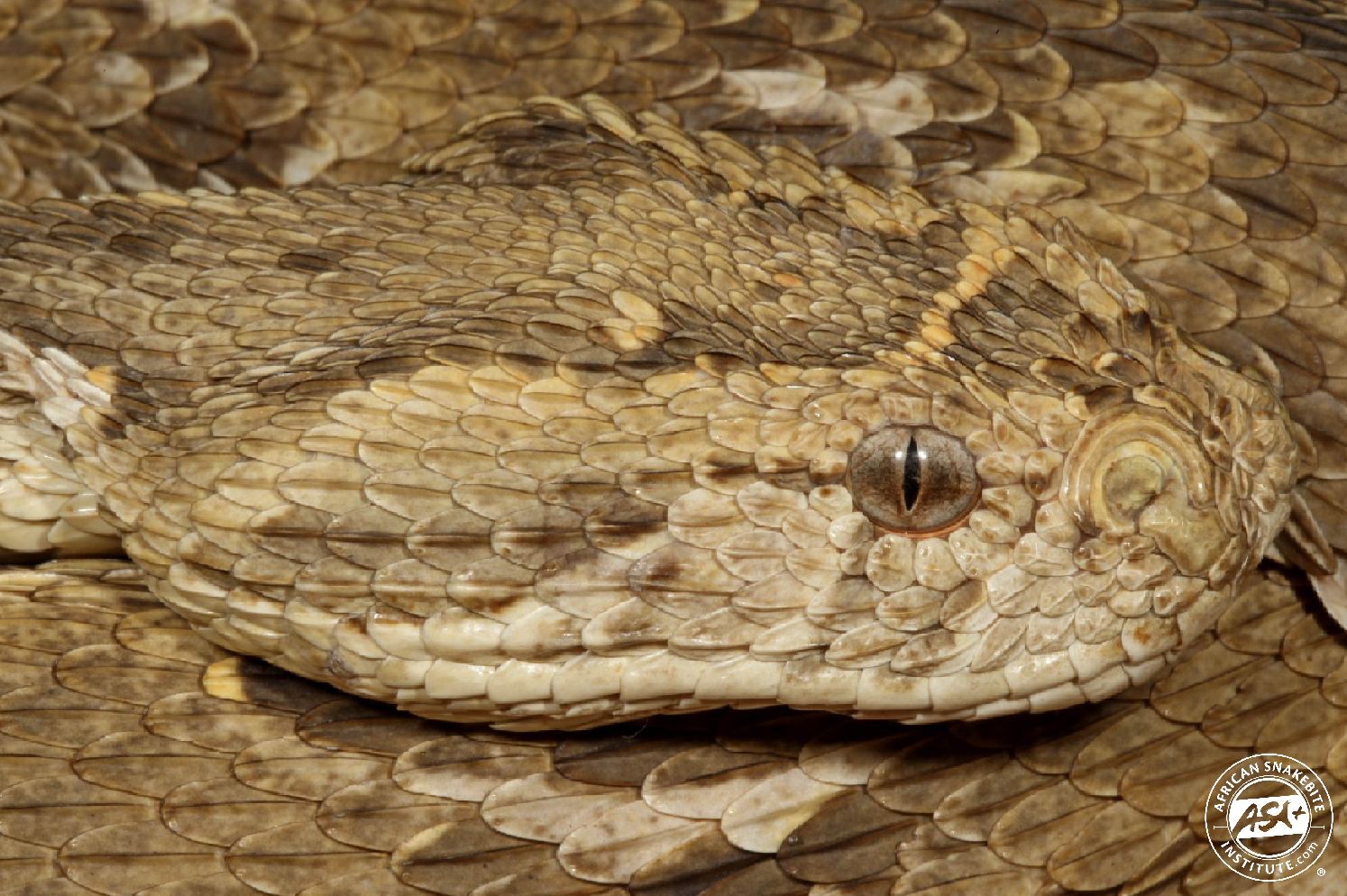 |
|
Slit-like pupils are commonly seen in nocturnal snakes like this Puff Adder (Bitis arietans).
|
|
The keyhole-shaped pupils, found in vine snakes (Thelotornis spp.), enhance their depth perception and ability to detect movement. This is ideal for a tree-living snake in an environment where prey animals are not easily spotted.
Snakes do not have moveable eyelids and their eyes are always open, even when they are sleeping. They have a thin scale covering the eye to protect it, which is called a spectacle. This protects the eye if the snake bumps into thorns, sticks or grass. The spectacle is replaced each time the snake sheds its skin. In the burrowing blind snakes the spectacle is thick, limiting their ability to see.
|
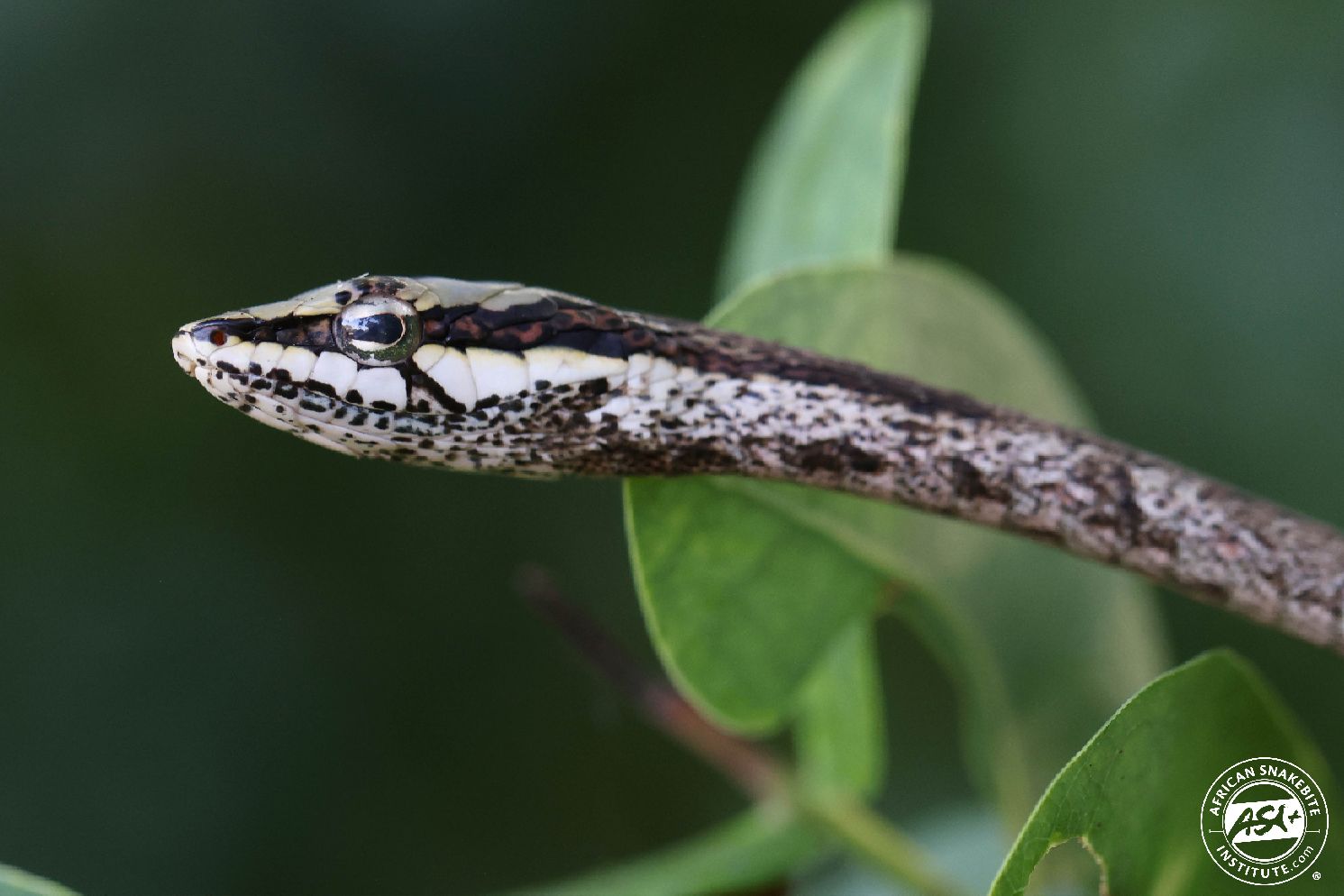 |
|
Vine Snakes are well-known for their key-hole shaped pupils.
|
|
Most snakes can see in colour, and only some snakes like the burrowing species see in black and white. This depends on the ratio of cone to rod structures in the eye. Diurnal snakes, like many terrestrial species have round pupils and a higher ratio of cones to rods and have better colour vision, while nocturnal and burrowing species have rods.
The position of the eye on the snake’s head also suggests how the snake hunts its prey. Snakes, like the Péringuey’s Adder, have eyes situated on the top of the head that enable the snake to see while it is buried in the sand. Boomslang, on the other hand, have large eyes situated on the side of the head with overlapping fields of vision and good depth and distance perception. Snakes maintain visual contact with potential prey and respond to subtle cues like movement from breathing. Most snakes can see quite well and can detect movement very quickly.
|
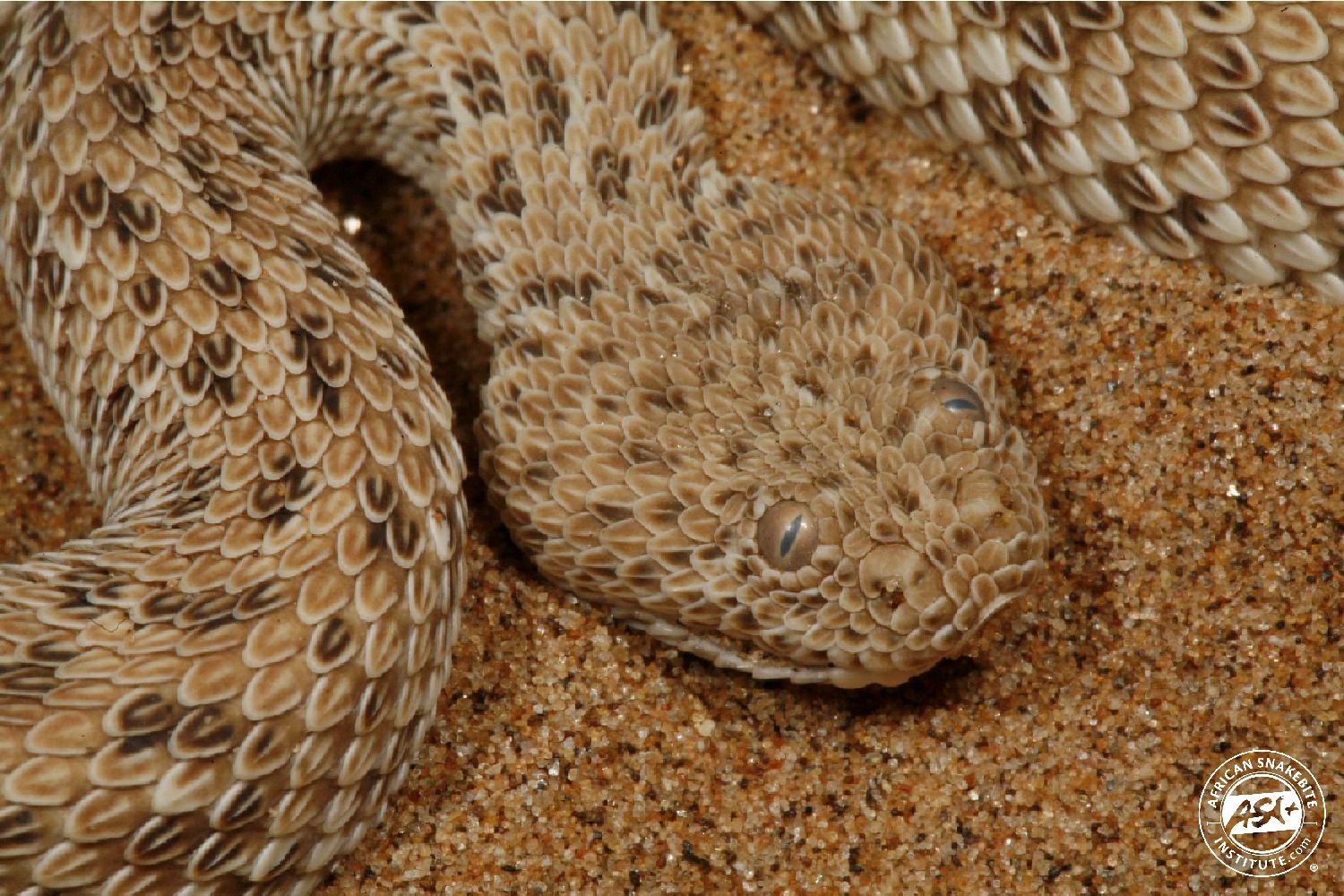 |
|
Péringuey’s Adders have eyes positioned near the top of the head, which allow them to bury in the soft sand with only the eyes protruding above the sand.
|
|
|
ASI Budget Snake Resistant Gaiters with shin guard - back in stock!
Tried and tested against bites from the Puff Adder, Cape Cobra, Snouted Cobra and Black Mamba with no penetration during testing.
These gaiters include a 3-panel moulded boot cover to ensure foot protection at the ankle. Two adjustable straps with buckles ensure a secure fit – one size fits all.
Price R790.00
|
| Order here |
|
|
|
Hearing and vibration: How snakes hear and feel
Snakes do not have any external ears, eardrum, or ear canals that transfer the sounds to the inner ear. Snakes cannot hear most airborne sounds, but they will be able to “feel” them. They rely on detecting vibrations transmitted from the ground or air through a thin bone called the columella, which is attached to the quadrate bone at the back of the upper jaw. Even though snakes are not able to hear as well as humans do, they are very sensitive to vibrations and are extremely good at sensing them. Snakes can even determine the direction from where the vibration came. For this reason, hikers do not see snakes that often as most snakes will detect their approach and quickly disappear.
|
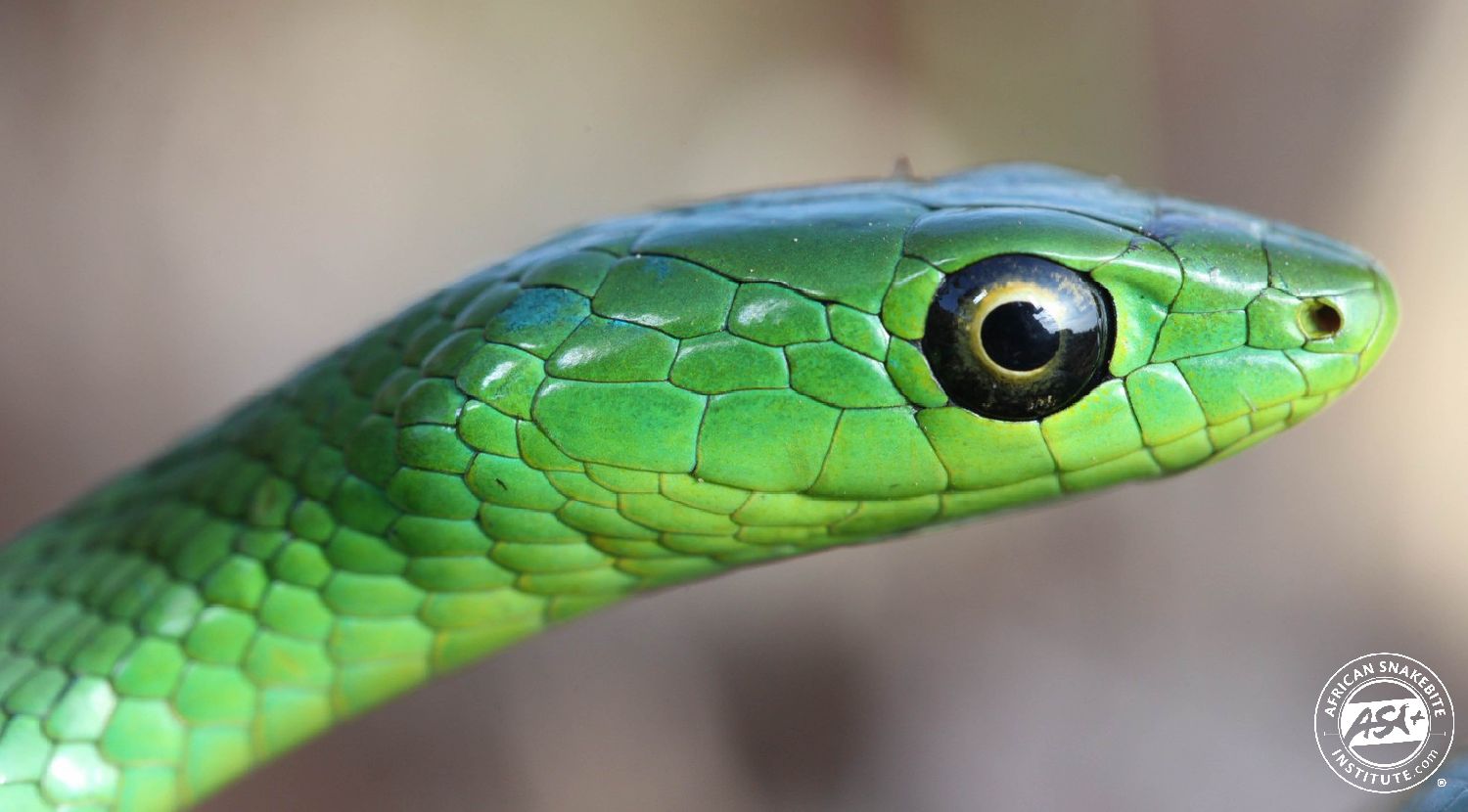 |
|
Snakes, unlike most other reptiles, do not have external ears and there are no ear holes. This means they cannot hear most airborne sounds and rely on vibrations. The snake is a harmless Eastern Natal Green Snake (Philothamnus natalensis).
|
|
|
|
Smell: How do snakes smell?
If you have spent any amount of time around snakes, you will notice their tendency to flick their tongue towards objects. Snakes use their tongue for smelling. The tongue can pick up molecules in the air and these are processed in the roof of the mouth by a special organ called the Jacobson’s organ, which tells the snake what it is smelling. Snakes can detect the gradients in scent and the differences in the direction from which the odour originates. They can also smell through their nostrils and have sensory membranes on the inside of the nostrils which are sensitive to airborne molecules. This, along with the flicking tongue, provides information about the environment around the snake.
In folklore, the tongue is regarded as a stinger and will bring death. This is not the case and a snakes’ tongue cannot sting or hurt you in any way.
|
 |
|
The tonge is one of the most important organs for a snake and allows them to pick up scents in their environemnt. The snake is a mildly venomous Eastern Tiger Snake (Telescopus semiannulatus).
|
|
“Heat vision”: Thermal and Infrared radiation.
Like most animals, most of the sensory information related to heat and temperature is probably sensed by free nerve endings in the skin. The ability to sense infrared has evolved independently in pit vipers, boas, anacondas and pythons. In Africa, only the pythons have heat-sensing pits, which are located on the upper lip on either side of the snout. These pits enable snakes to detect thermal radiation and small differences in temperature from their environment around them and they can form a picture from this. The pits are extremely sensitive and can detect temperature differences of up to a thousandth of a degree Celsius. This ability complements vision and helps the snake to detect prey, even in pitch darkness. Pythons can sense the heat of their prey from around 30 cm away and pit vipers, with more effective infrared receptors, up to about 100 cm away. In South Africa it is only the Southern African Python that have heat sensors.
|
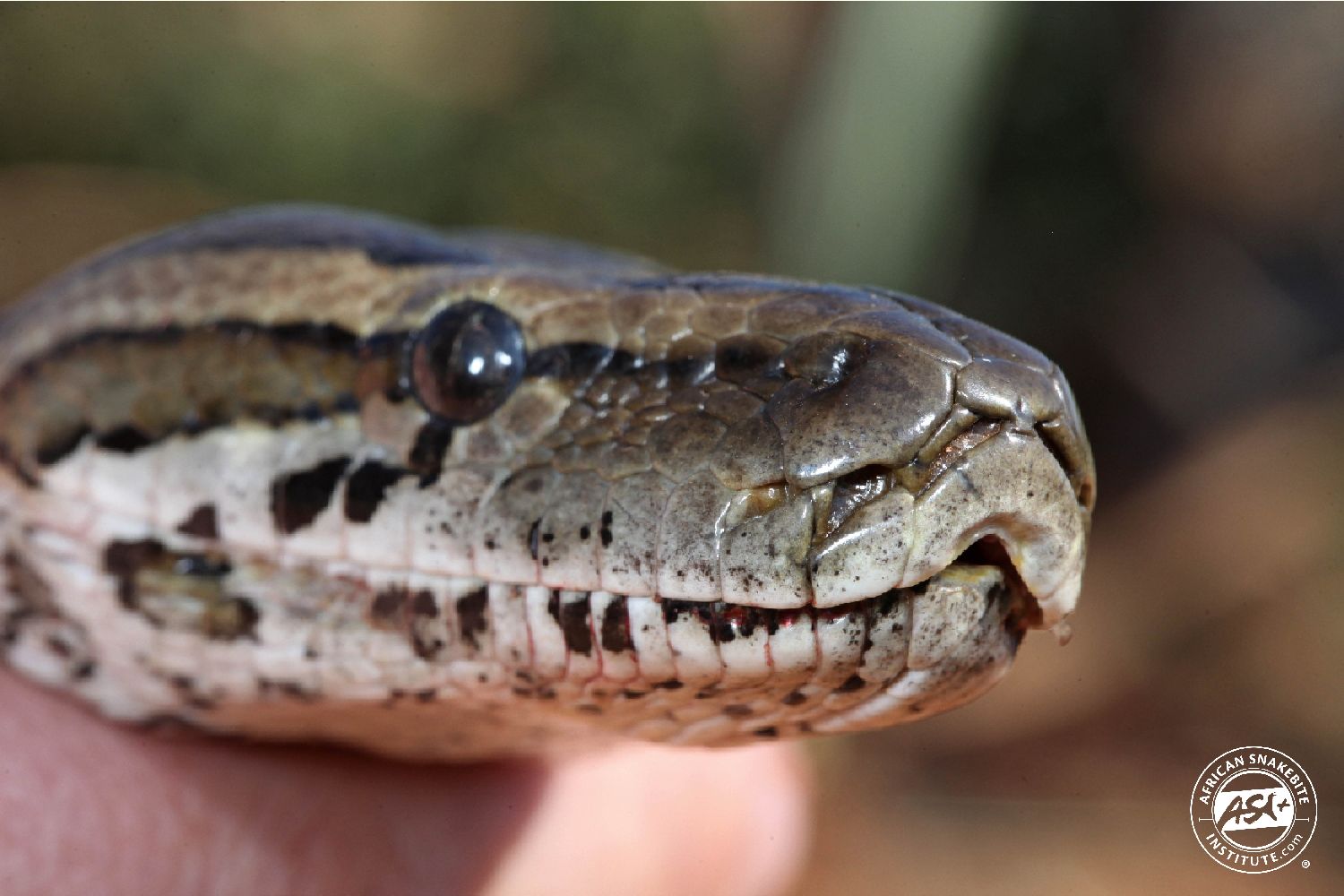 |
|
In Africa, only the pythons have heat pits. This pits are visible as three slits on eaither side of the snout. Around the world, the Pitvipers like Rattlesnakes as well as other pythons and boas also have heat pits.
|
|
|
|
ASI Corporate Snake Removal Kit
The kit includes:
JM150 Snake Tongs – (Preferred tong length on most corporate sites)
ASI PRO Snake Hook
750 mm Snake Tube
Safety Goggles
Cordura Snake Gaiters (Velcro)
Includes heavy-duty 1.5 m zip-up bag.
And a FREE A1 Snakes of Southern Africa Poster
For shipping fees outside of South Africa – please email us on info@asiorg.co.za
Price R3580.00
|
| Order here |
|
|
|
Taste buds: Can snakes taste?
There are numerous sources of information that state that snakes cannot taste and have no taste buds. These statements are usually followed by the description of the Jacobson’s organ, tongue flicking and its importance in “tasting” the air. Very few studies have been done on the tasting ability of snakes. Recently, taste buds have been found on the soft tissue inside the mouth of rattlesnakes and are reported to look similar to the taste buds found in other reptiles. Sensory hair-like structures, that are considered to be taste buds have been found in sea snakes. There is little doubt that snakes have sensory receptors in the mouth that respond to multiple stimuli, but this subject needs further research.
All of these advanced sensory organs allow snakes to be a very successful group of animals that have adapted to almost all environments around the world.
|
|
|
|
|
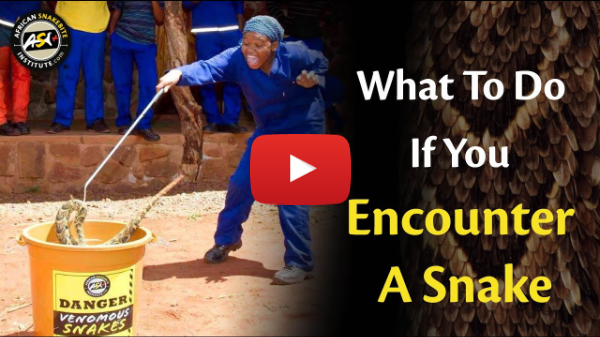 |
|
View more videos online here.
|
|
|
|
ASI Warning Signboard
The ever popular "Danger Venomous Snakes" warning signboard is great for gates, snake rooms and areas are known to occur. Made from 0.9 mm ABS plastic.
Price R120.00
|
| Order here |
|
|
|
|
|
DURBAN
Snake Awareness, First Aid for Snakebite and Venomous Snake Handling Course
Date: Saturday 16 November 2024
Venue: PheZulu Safari Park, Assagay, KwaZulu-Natal
|
|
|
| Book here |
|
|
|
DURBAN
Advanced Venomous Snake Handling
Date: Sunday 17 November 2024
Venue: PheZulu Safari Park, Assagay, KwaZulu-Natal
|
|
|
| Book here |
|
|
|
WESTERN CAPE
KLAPMUTS
Snake Awareness, First Aid for Snakebite and Venomous Snake Handling Course
Date: Saturday 16 November 2024
Venue: Exotic Animal World, Klapmuts
|
|
|
| Book here |
|
|
|
WESTERN CAPE
KLAPMUTS
Venomous Snake Handling Bootcamp
Date: Sunday 17 November 2024
Venue: Exotic Animal World, Klapmuts
|
|
|
| Book here |
|
|
|
WESTERN CAPE
KLAPMUTS
Kids' Snake Awareness Course
Date: Sunday 17 November 2024
Venue: Exotic Animal World, Klapmuts
|
|
|
| Book here |
|
|
|
GAUTENG
MULDERSDRIFT
Snake Awareness, First Aid for Snakebite and Venomous Snake Handling Course
Date: Saturday 23 November 2024
Venue: Cradle Moon Lakeside Lodge, Muldersdrift
|
|
|
| Book here |
|
|
|
GAUTENG
MULDERSDRIFT
FREE Kids Snake Awareness Session
Date: Saturday 23 November 2024
Venue: Cradle Moon Lakeside Lodge, Muldersdrift
|
|
|
| Book here |
|
|
|
GAUTENG
MULDERSDRIFT
Venomous Snake Handling Course
Date: Sunday 24 November 2024
Venue: Cradle Moon Lakeside Lodge, Muldersdrift
|
|
|
| Book here |
|
|
|
|
|
|
|
Johan Marais is the author of various books on reptiles including the best-seller - A Complete Guide to Snakes of Southern Africa. He is a popular public speaker and CEO of the African Snakebite Institute. The African Snakebite Institute (ASI) offers a variety of courses including Snake Awareness, Scorpion Awareness and Venomous Snake Handling. ASI is accredited by the International Society of Zoological Sciences (ISZS) and is a Travel Doctor-approved service provider. The courses are also accredited by the Health Professions Council of South Africa (HPCSA). ASI is the largest provider of quality snake handling and safety equipment in Africa!
|
 |
|
Copyright © 2024 African Snakebite Institute, All rights reserved.
Our mailing address is:
admin@asiorg.co.za
unsubscribe from this list
|
|
|
|
|